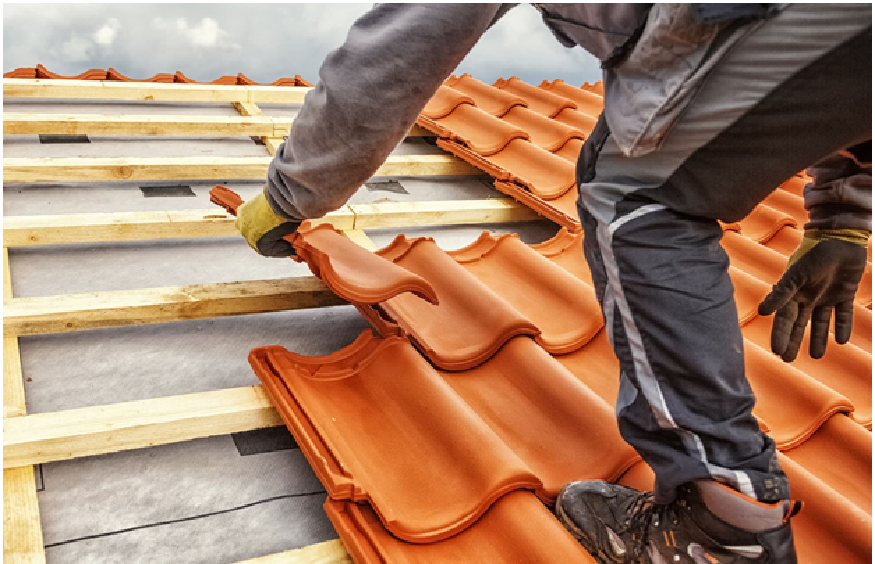The Science Of Understanding Roofing Materials And Their Lifespans
Roofing materials play a crucial role in protecting our homes and buildings from the elements. Understanding their lifespans is essential for homeowners and professionals in the roofing industry. In this article, we will explore the fundamentals of roofing materials, the factors that affect their lifespans, and the different types of commonly used roofing materials.
Fundamentals of Roofing Materials
Roofing materials are designed to withstand various weather conditions and provide a protective barrier for the structure they cover. They should be durable, weather-resistant, and capable of withstanding the test of time.
There are several types of roofing materials available, each with its own unique properties and characteristics. Some of the most common roofing materials include asphalt shingles, metal roofing, wood shingles and shakes, slate roofing, and clay or concrete tiles. These materials differ in terms of their lifespan, cost, maintenance requirements, and overall performance.
Factors Affecting Roofing Material Lifespans
Weather and Climate Conditions
The weather and climate conditions in an area have a significant impact on the lifespan of roofing materials. Extreme temperatures, high humidity, heavy rainfall, snow, ice, and strong winds can all take a toll on your roof. Constant exposure to these weather elements can cause materials to deteriorate faster, leading to a shorter lifespan.
Quality and Durability of the Material
The quality and durability of roofing materials are crucial factors in determining their lifespan. High-quality materials are designed to withstand harsh weather conditions and resist damage from UV radiation, moisture, and pests. Investing in top-notch materials can significantly extend the lifespan of your roof.
Installation and Maintenance Practices
The installation and maintenance practices employed for roofing materials also impact their longevity. Improper installation or neglecting regular maintenance can lead to premature roof failure. It is essential to hire professional roofers who follow industry best practices and conduct regular inspections and repairs.
Exposure to Sunlight and UV Radiation
Exposure to sunlight and UV radiation can cause roofing materials to deteriorate over time. The sun’s rays can break down the protective properties of materials, leading to cracking, fading, and overall degradation. Using materials with UV-resistant coatings can help protect against this type of damage and extend the lifespan of the roof.
Common Roofing Materials and Their Lifespans
Asphalt Shingles
Asphalt shingles are one of the most popular roofing materials due to their affordability and versatility. They generally have a lifespan of 20 to 30 years, depending on the quality of the shingles and the climate conditions in the area. Regular maintenance and inspections can help prolong their lifespan.
Metal Roofing
Metal roofing is known for its durability and longevity. Depending on the type of metal used, metal roofs can last anywhere from 40 to 70 years or more. Copper and zinc roofs can even last over 100 years. Proper installation and maintenance are essential to maximize the lifespan of a metal roof.
Wood Shingles and Shakes
Wood shingles and shakes provide a unique and natural look to roofs. Their lifespan can vary depending on the type of wood used and the climate conditions. Typically, wood shingles can last around 20 to 30 years, while wood shakes can have a longer lifespan of 30 to 40 years. Regular maintenance, such as treating the wood and ensuring proper ventilation, can help prolong their life.
Slate Roofing
Slate roofing is renowned for its durability and aesthetic appeal. A well-maintained slate roof can last over 100 years, making it one of the longest-lasting roofing materials available. However, it is important to note that slate roofs require professional installation and regular inspections to ensure their longevity.
Clay or Concrete Tiles
Clay and concrete tiles are known for their durability and resistance to fire and insects. When properly installed and maintained, these roofs can last 50 to 100 years. Their lifespan can vary depending on the quality of the tiles and the climate conditions in the area.
The Importance of Regular Roof Maintenance
Regular roof maintenance is crucial for extending the lifespan of any roofing material. By conducting regular inspections, identifying and addressing issues early on, and performing necessary repairs and maintenance tasks, homeowners can significantly prolong the life of their roofs.
Maintenance tasks may include cleaning gutters, removing debris, checking for loose or damaged shingles, inspecting for leaks or water damage, and ensuring proper ventilation. It is recommended to hire a professional roofing contractor for comprehensive roof inspections and maintenance.
Tips for Extending the Lifespan of Roofing Materials
Regular Inspections and Maintenance
Regular inspections and maintenance are vital for identifying potential problems and addressing them before they become major issues. Homeowners should schedule professional roof inspections at least once a year and perform regular maintenance tasks as recommended by experts.
Effective Ventilation Systems
Proper ventilation is essential for a healthy and long-lasting roof. It helps prevent moisture buildup and reduces the risk of damage from extreme temperatures. Homeowners should ensure that their roofing system has adequate ventilation to maximize the lifespan of the materials.
Regular Cleaning and Debris Removal
Regularly cleaning the roof and removing debris, such as fallen leaves or branches, can help prevent moisture buildup and minimize the risk of damage. It also reduces the chance of mold growth and improves the overall appearance of the roof.
Protective Coatings and Sealants
Applying protective coatings and sealants can enhance the durability and lifespan of roofing materials. These coatings provide an additional layer of protection against UV radiation, moisture, and other potential causes of damage. Homeowners should consult with roofing professionals to determine the best coating or sealant for their specific roofing material.
Signs of Aging and Replacement
Over time, even with proper maintenance, roofing materials will begin to show signs of aging and may require replacement. Some common indicators that a roof may need replacing include curling or cracked shingles, leaks, water stains on interior walls or ceilings, excessive moss or algae growth, and visible wear and tear.
When these signs are present, it is crucial to consult with a roofing professional to assess the condition of the roof and determine if replacement is necessary. Ignoring these signs can lead to further damage and costly repairs.
Benefits of Choosing Longer-Lasting Roofing Materials
Investing in longer-lasting roofing materials offers numerous benefits for homeowners. Firstly, it reduces the frequency and cost of roof replacements, saving homeowners money in the long run. Longer-lasting materials also provide better protection against the elements, increasing the overall durability and resilience of the structure.
Additionally, choosing roofing materials with longer lifespans can enhance the aesthetics and value of the property. It gives homeowners peace of mind knowing that their roof will last for many years without requiring major repairs or replacements.
The Environmental Impact of Roofing Materials and Lifespans
Roofing materials and their lifespans can have a significant environmental impact. Some materials, such as asphalt shingles, have a relatively short lifespan and contribute to landfill waste when replaced. On the other hand, materials like metal and slate have longer lifespans and are often recyclable.
Choosing roofing materials that are recyclable or made from eco-friendly materials can help minimize the environmental impact. Additionally, by choosing longer-lasting materials, homeowners can reduce the demand for new roof installations, thereby conserving resources and reducing energy consumption associated with manufacturing new materials.
In conclusion, understanding the science behind roofing materials and their lifespans is essential for homeowners and professionals alike. By considering factors such as weather conditions, material quality, and maintenance practices, homeowners can make informed decisions about the type of roofing material to use and take steps to maximize its lifespan. Regular maintenance, proper installation, and choosing longer-lasting materials can contribute to a durable and resilient roof that protects homes for years to come.
Publisher Details:
Dr. Roof
23801 Calabasas Rd #1027, Calabasas, CA 91302, United States
(866) 308-2138
mydrroof.com
[email protected]
Roofing materials are vital for protecting homes, with factors like weather, quality, and maintenance influencing their lifespan. Regular inspections, effective ventilation, cleaning, protective coatings, and recognizing signs of aging contribute to a longer-lasting roof, offering benefits like reduced replacement costs and environmental impact. Trust Dr Roof for professional roof repair in Encino, CA.
Read their insightful new blog on Why You Should Choose a Slate Roof


